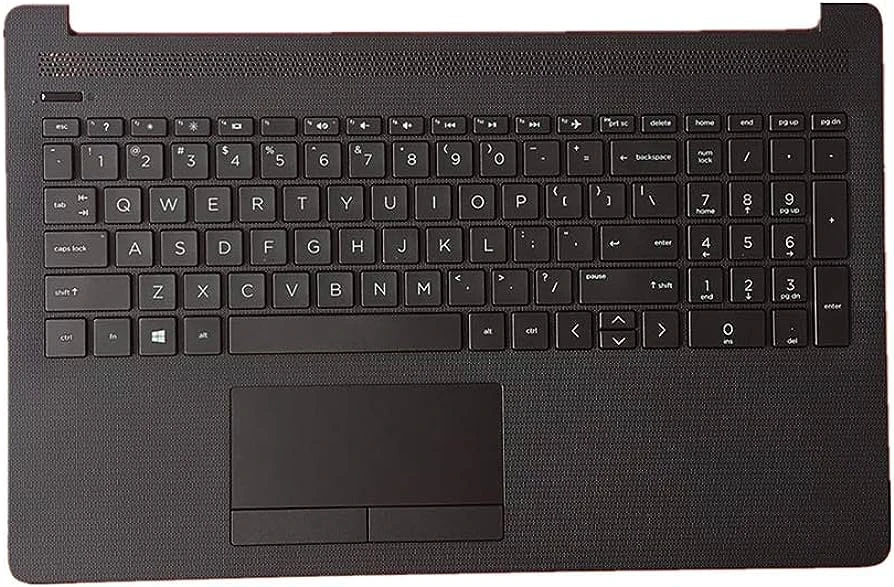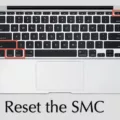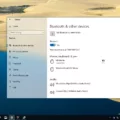The trackpad on your laptop is an essential tool for navigating and interacting with your computer. It allows you to move the cursor, click and select, and perform various gestures to control your device. However, you may have noticed that over time, your trackpad starts to feel slow and unresponsive. In this article, we will explore the reasons behind a slow trackpad and provide some possible solutions.
One of the most common reasons for a slow trackpad is the sensitivity settings. Windows provides options to adjust the touchpad sensitivity, allowing you to customize it according to your preference. To do this, go to Settings > Devices > Touchpad in Windows and change the sensitivity through the drop-down menu. Experiment with different levels until you find the one that feels most comfortable for you.
Another factor that can contribute to a slow trackpad is the accumulation of dust and dirt. Small particles, such as dead skin cells and dirt, can easily find their way onto your trackpad and interfere with its smooth operation. To prevent this, it is important to regularly clean your trackpad. Use a soft cloth or a screen cleaning solution to gently wipe the surface of the trackpad. This simple maintenance routine can make a significant difference in the responsiveness of your trackpad.
Outdated or missing drivers can also cause issues with your trackpad. Drivers are software packages that enable your operating system to communicate with your hardware. If your trackpad isn’t working correctly, it may be a result of a missing or out-of-date driver. To update or reinstall your trackpad drivers, you can use Device Manager. Simply enter “Device Manager” in the search bar on the taskbar, then select it from the results. Look for the trackpad driver in the list, right-click on it, and choose the update or reinstall option.
In some cases, the issue may not be with your trackpad itself, but with the physical condition of your laptop. If your laptop is old or has been subjected to physical damage, it is possible that the trackpad hardware itself is worn out or malfunctioning. Unfortunately, in such cases, there may not be much you can do to fix the problem other than replacing the trackpad or seeking professional help.
A slow trackpad can be frustrating and hinder your productivity. By adjusting the sensitivity settings, keeping the trackpad clean, and ensuring you have the latest drivers installed, you can improve the responsiveness of your trackpad. However, if the issue persists, it may be a sign of hardware problems that require further attention.

How Do You Fix Your Slow Trackpad?
To address a slow trackpad issue, you can follow these steps:
1. Open the Start menu and go to “Settings”.
2. Within the Settings menu, select “Devices”.
3. From the Devices menu, choose “Touchpad”.
Now, you have entered the Touchpad settings where you can modify the trackpad sensitivity to resolve the slow trackpad problem.
4. Look for the “Touchpad sensitivity” drop-down menu and click on it.
5. A list of sensitivity options will appear. Select a higher sensitivity level to make the trackpad respond more quickly to your touch.
In addition to adjusting the sensitivity, you can also disable certain features that might be causing the trackpad to be slow or unresponsive.
6. Check if there are any options related to tap-to-click and disable it if it’s enabled. This prevents accidental clicks when tapping on the trackpad.
7. Some trackpads have a lower-right-corner feature that performs a specific action when touched. If enabled, try disabling it to see if it improves the trackpad performance.
By making these adjustments to the touchpad settings, you should be able to fix the issue of a slow or unresponsive trackpad.
Why is Your Mousepad So Laggy?
There are several reasons why your mouse pad may be laggy. Let’s explore them in detail:
1. Dirt and dust accumulation: As mentioned earlier, dust, dead skin cells, and dirt can accumulate on your mouse pad over time. This build-up creates friction between the mouse and the pad, leading to a slower and less responsive movement. Regular cleaning can help prevent this issue.
2. Surface wear and tear: Continuous usage of the mouse pad can cause the surface to wear out. This can result in a rough texture or unevenness, affecting the smooth movement of your mouse. Over time, the friction between the mouse and the pad increases, leading to laggy movements.
3. Moisture and spills: Accidental spills or moisture exposure can also contribute to a laggy mouse pad. Liquids can seep into the pad, causing damage to the internal layers or disrupting the smoothness of the surface. If your mouse pad has been exposed to any liquid, it is advisable to replace it to avoid further issues.
4. Poor quality or incompatible mouse pad: Not all mouse pads are created equal. Some lower-quality or incompatible mouse pads may lack the necessary precision and responsiveness that a high-quality mouse requires. Investing in a mouse pad specifically designed for gaming or high-precision tasks can significantly improve your mouse’s performance.
To resolve the laggy mouse pad issue, here are some steps you can take:
– Regularly clean your mouse pad by gently wiping it with a damp cloth or using a mild cleaning solution.
– Avoid eating or drinking near your computer setup to minimize the risk of spills.
– Consider investing in a higher-quality mouse pad that is compatible with your mouse.
– If your mouse pad is excessively worn out or damaged, it may be time to replace it with a new one.
By addressing these potential causes and implementing the suggested solutions, you can improve the performance of your mouse pad and enjoy smooth and lag-free mouse movements.
Why is Your Trackpad Not Moving Smoothly?
There are several potential reasons why your trackpad may not be moving smoothly. Here are some possible causes and solutions:
1. Dirt or debris on the trackpad surface:
– Clean the trackpad with a soft, lint-free cloth to remove any dirt or debris that may be interfering with its movement.
– If necessary, use a mild cleaning solution specifically designed for electronics.
2. Outdated or incompatible touchpad driver:
– Open Device Manager by searching for it in the taskbar search.
– Expand the “Mice and other pointing devices” category.
– Right-click on the touchpad driver and select “Update driver.”
– Follow the on-screen instructions to update the driver to the latest version.
– If an update is not available, try uninstalling the driver and then restarting your computer. Windows will reinstall the driver automatically.
3. Settings or sensitivity adjustments:
– Open the settings for your trackpad, either through your computer’s control panel or through a dedicated software provided by the manufacturer.
– Adjust the sensitivity settings to make the trackpad more responsive or to your preferred level of sensitivity.
– Experiment with different settings to find the one that works best for you.
4. Physical damage or hardware issues:
– If none of the above solutions work, there may be physical damage to the trackpad or a hardware issue.
– In this case, it is recommended to contact the manufacturer’s support or take your computer to a professional technician for further diagnosis and repair.
Remember to test the trackpad after each troubleshooting step to see if the issue has been resolved. If the problem persists, it may be necessary to seek professional assistance or consider replacing the trackpad.
Conclusion
The trackpad on your computer is a versatile and convenient tool that allows you to navigate and control your device with ease. However, it is not uncommon for trackpads to become slow or unresponsive over time. This can be due to a variety of factors, such as dust and dirt accumulation, outdated drivers, or incorrect sensitivity settings.
To address these issues, it is important to regularly clean your trackpad to remove any debris that may be affecting its performance. This can be done by gently wiping the surface with a soft, lint-free cloth. Additionally, adjusting the sensitivity settings in your device’s settings can help improve the responsiveness of your trackpad.
If your trackpad is still not functioning properly, it may be necessary to update or reinstall the drivers. This can be done through the Device Manager in Windows, where you can locate and update the touchpad drivers.
By taking these steps, you can ensure that your trackpad continues to function smoothly and efficiently. Remember to keep your trackpad clean, adjust sensitivity settings to your preference, and update drivers when necessary. With proper care and maintenance, your trackpad can provide you with a seamless and enjoyable user experience.








